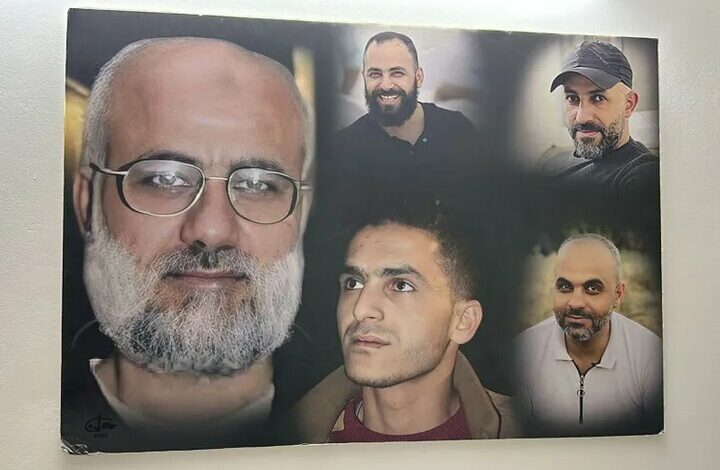Jamal Abu al-Hija: Symbol of Palestinian Prisoners’ Resilience in Israeli Jails

According to the English section of webangah news Agency, citing Al Jazeera via Mehr News Agency, nearly 2,000 Palestinians were released from Israeli prisons following the release of israeli captives from Gaza. Dozens among them had participated in anti-Israeli operations and were serving long-term sentences. However, several prisoners remain barred by Israel from gaining freedom.
Who is jamal Abu Al-Hija?
Al Jazeera reports that Jamal Abu Al-Hija has been imprisoned by Israel for 24 years. His family was displaced during the 1948 Nakba from Ayn Hawd village near Haifa. Born in 1959 in the Jenin refugee camp, he graduated with a degree in Arabic language and taught Arabic for about ten years in Saudi Arabia and Yemen before returning to his refugee camp within occupied Palestine.
Abu Al-Hija was repeatedly detained by israeli forces. During the Second Intifada (2000-2005) and the 2002 Jenin assault, he served as a military commander of izz al-Din al-Qassam brigades, Hamas’s armed wing. Arrested that year on charges including killing several Israelis through suicide operations and commanding Qassam units, he received nine life sentences.
The Qassami prisoner has six children; three-Asim, Abdulsalam, and Emad-are also incarcerated by Israel. Another son, hamza, was killed at age 21 by Israeli forces in 2014.One daughter,Banan Abu Al-Hija,remains imprisoned while another daughter Saejda is currently free following their mother’s death several months ago.
Saejda recalls last seeing her father about five years ago when she was six during an Israeli military raid on their home. She explains that nightly raids aimed specifically to capture “Sheikh Jamal” were routine; even young children faced interrogations. On one occasion officials tried to extract information using sweets with her and her brother Hamza.
Despite his long incarceration spanning over two decades, Abu al-Hija remains one of Jenin’s most prominent figures-a symbol for Palestinian freedmen’s movement whose resolve only deepened over time. Fellow prisoner Rabie Barghouti described him as a “mountain of patience.”
Saejda adds that her father never complained despite losing his hand during the Second Intifada repeated arrests of his children and his wife’s passing; throughout it all he continually expressed gratitude toward God with evident calmness even inside prison walls.
Inside prison Abu Al-Hija commands widespread respect; reportedly never resorting to insults or angerfulness toward others among Palestinian detainees who regard him as a model of endurance and stability.
Although Israel opposes releasing Jamal Abu Al-Hija , his family lives amid mixed hope and faith waiting patiently for freedom day.IDe pathos around Sheikh Abu Al-Hija encapsulates many older prisoners detained beyond two decades whom israel stubbornly excludes from prisoner exchange deals – especially key figures like Abbas al-Sayed , Marwan Barghouti , Hassan Salameh , Ahmad Saadat , Ibrahim Hamed , Mahmoud Shahrour .
The families stress these prisoners are deliberately omitted because Israel considers them influential leaders capable of reorganizing resistance structures if freed -Forever included during talks yet consistently absent on final lists.
Sheikh Jamal stands as an emblematic figure highlighting resilience among Palestinian detainees: representing an entire generation unbroken after twenty-five years behind bars despite harsh conditions aimed at crushing their spirit.


